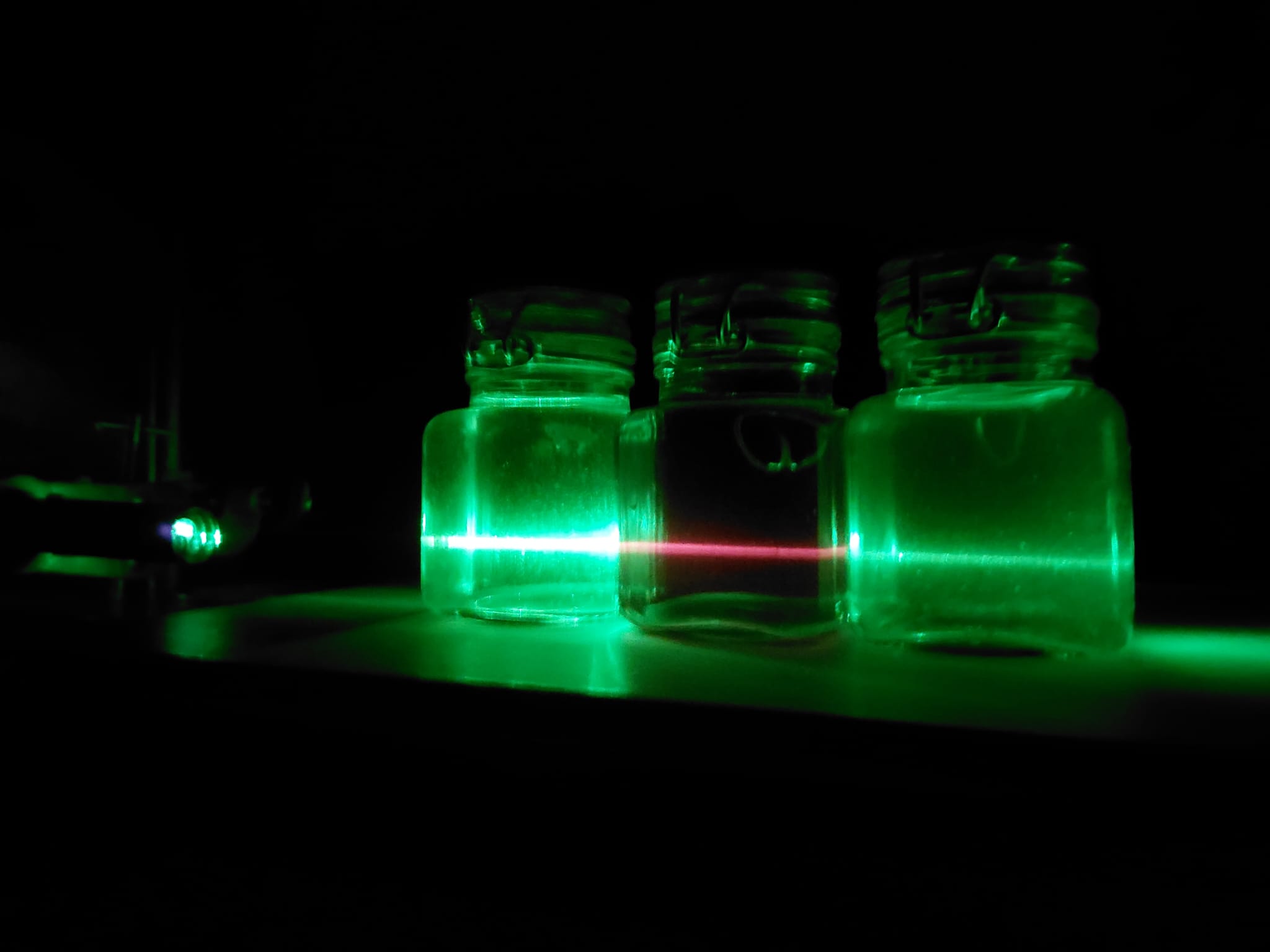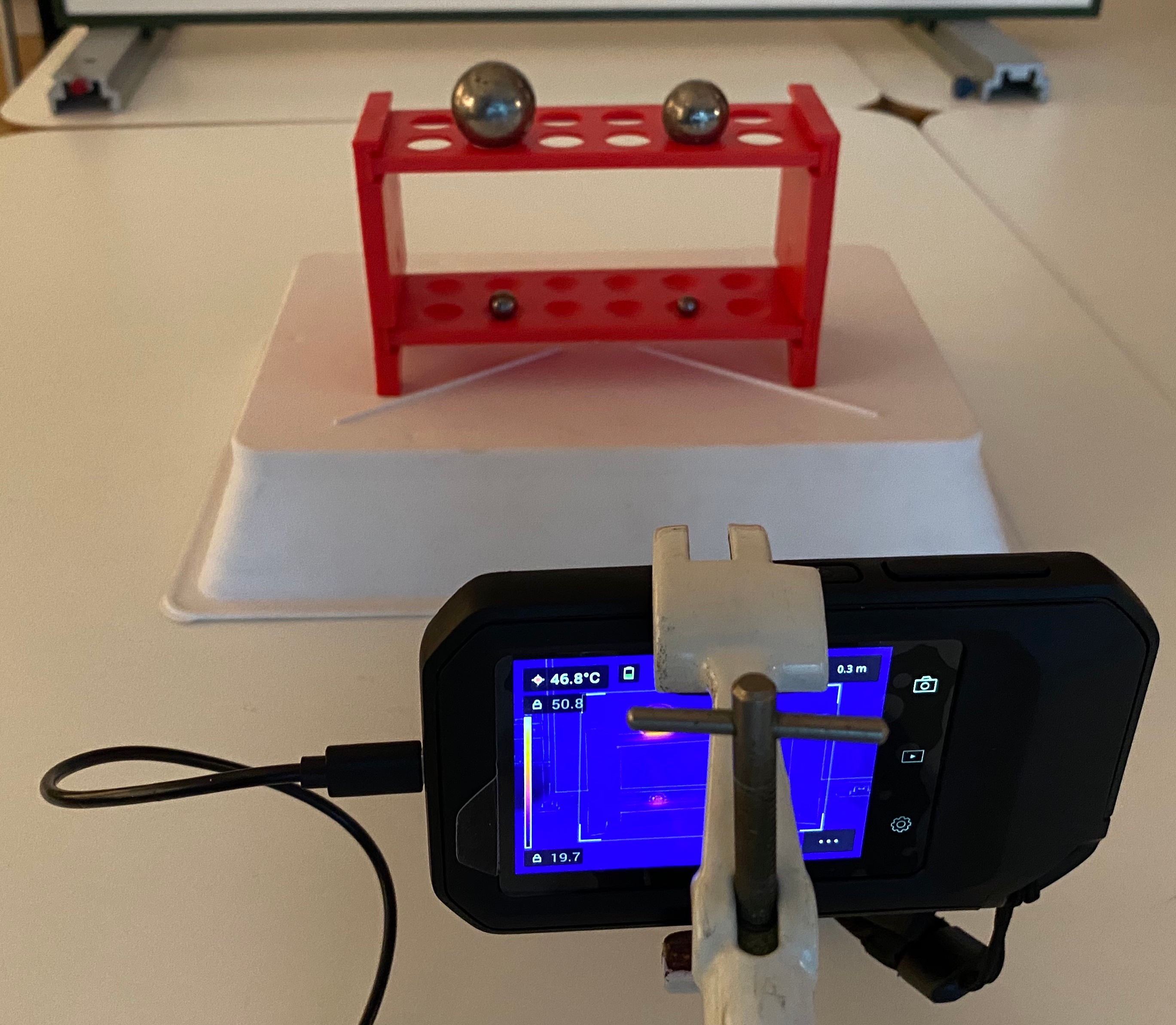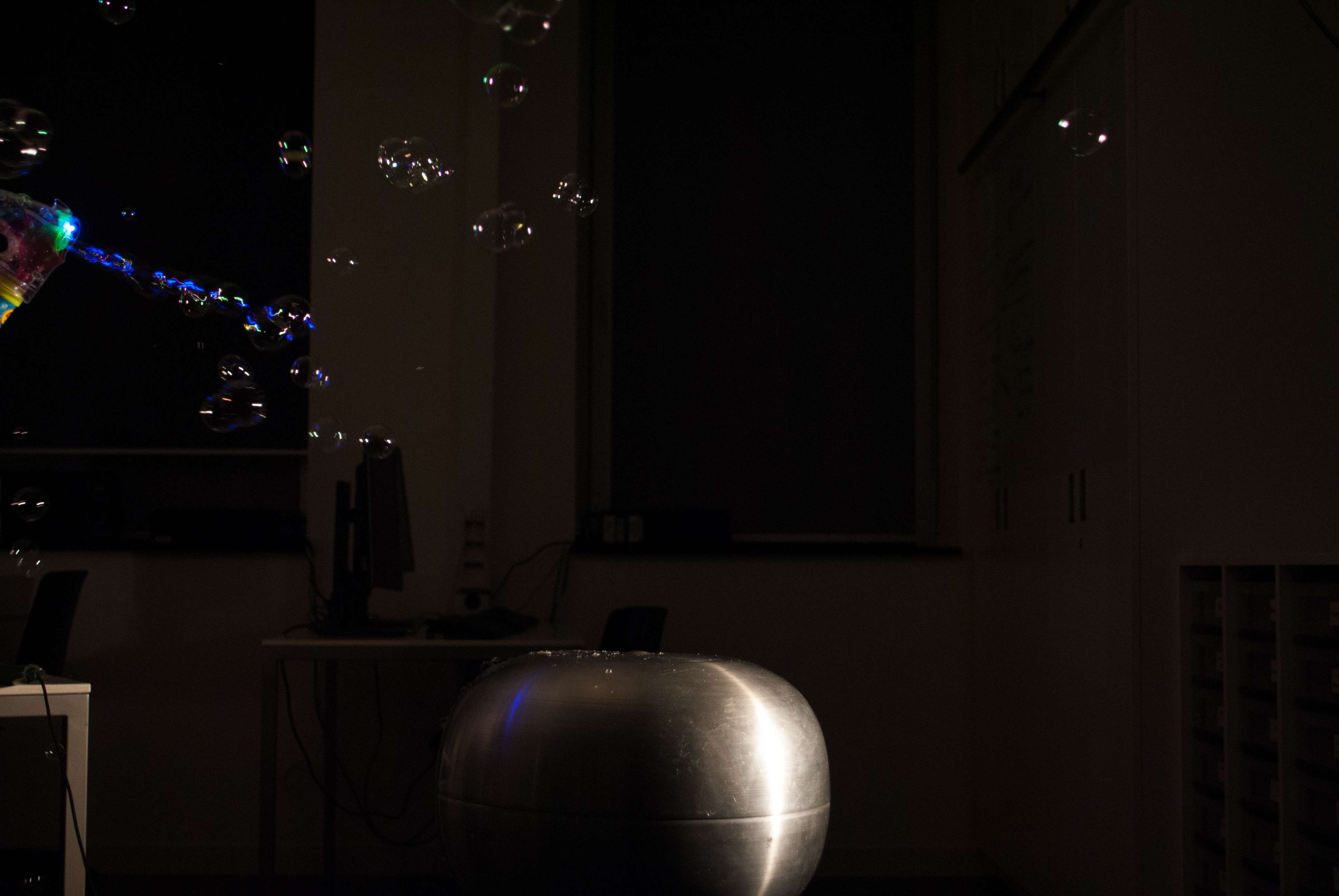1. Show the Physics#
This book presents a selection of the 99 best, most beautiful physics demonstrations from the Dutch book series “ShowdeFysica” [Frederik et al., 2023, Frederik et al., 2017, Frederik et al., 2015] as published by the Dutch Association for Science Education. The three original volumes are cherished in the Netherlands by physics teachers and are used as a useful resource for many lectures. We hope that this translated and updated open access book will be just as valuable to a wider range of physics teachers. Where most physics demonstration books cover a large range of demonstrations, we included strategies to make the most of these - making the demonstrations both magical and educational! Moreover, we included videos and opportunities to live code and use python simulations without the need for any software installation.

Fig. 1.1 One of the updated demonstrations: Fluorescent olive oil#
The demonstrations are structured using the four categories:
Demonstrations on nature of science
Demonstrations on scientific inquiry
Demonstrations for conceptual development
Demonstrations for special occasions
So, whether you want to deepen students’ understanding of a specific topic, want to engage them in thorough thinking, or if you were asked to demonstrate physics on a festive occasion, you can find demonstrations and inspiration in this book.
Tip
Your name can be amongst the list of contributors. If you have suggestions, you can open an issue using the git button at the top right of this page.
1.1. About this book#
This book originated in the collaboration between physics teachers and physics teacher educators, united in the Dutch Association for Science Education(NVON). The three Dutch volumes of ShowdeFysica cover over a 200 demonstrations for secondary school physics, along with additional text on the pedagogy of physics demonstrations. Each demonstration has been tested by various secondary school physics teachers and their technicians. The process of developing, writing, and checking ensures that all demonstrations are effective and accessible.

Fig. 1.2 The cooling of two heated metal balls. Which one cools down fastest, the big or the small ball?#
Are our demonstrations original? Don’t expect them to be so. Most demonstrations were inspired by earlier versions of the experiments - where possible referenced to earlier descriptions - and edited by the authors. For several demonstration we included questions to check students’ understanding of the phenomenon at hand!
Tip
This book is published under the CC-BY-NC, what means that you are allowed to use and adapt the materials for non-commercial use and under the condition that you refer to the original work.
1.2. How to use the book#
Demonstrations are fantastic. They offer so many wonderful possibilities to show the beauty of physics and amaze pupils, that we really should do at least one in every physics class. That may not always be feasible, but the objection “which demo then?” no longer applies. After all, this book provides 99 examples!
Surely you can read this book from cover to cover, but that was not our intention. Our main idea was to help provide teachers with ample demonstrations that could be readily used in the classroom, thereby helping students to grasp physics. Therefore, we choose and developed the demonstrations that really add value to the physics lessons. Hence, rather than reading the whole book, you can use the search function of the book and look for the topic that you are teaching next week to find a demonstration that suits well.
Tip
The different chapters on the pedagogy of physics demonstrations provide an excellent start as well!

Fig. 1.3 Why do soap bells behave strangely in the surrounding of a vanderGraaf generator?#
Warning
We have carefully conceived, developed, described and tested each of the experiments. Moreover, we specified safety issues where necessary. However, we are not responsible for whatever accidents, or injuries when doing a demonstration described in this book. We want to emphasize as well the requirement to test a demonstration before doing it with public.
1.3. Python#
In this online book you will find Python coding cells that you can run in your browser without the need for any additional materials. Our colleagues from Teachbooks contributed to this feature.
Even on this page we have made a code-cell that you can run and play with. The start of running a code-cell is always to click the at the top of the page. After loading the packages () you are good to go. Go to the cell and click run!
print('Hello World')
Some contain more advanced code, we try to keep it as simple as possible. Below we have executable code. Its output is a plot. You can run the cell, see the output, and alter anything inside to see how it functions…
# import libraries
import numpy as np
import matplotlib.pyplot as plt
# some data
x = np.array([1, 2, 3, 4, 5]) # some values for x
y = 3.14*x**2 # some values for y
# create graph
plt.figure()
plt.plot(x, y, 'k.') # plot data points as black (k) dots (.)
plt.plot(x,y, 'r--') # plot data points as red (r) dottedline (--)
plt.xlabel('$x$[m]') # add labels
plt.ylabel('$y$[s]')
plt.grid() # add grid
plt.savefig('plot.png') # save plot
plt.show() # show plot
Do you need more explanation? See our chapter on Python.
1.4. Your contribution?#
An absolute advantages of Jupyter Online Books is the ability to have readers contribute. If you see a typo, if something is not clear, or anything needs to be adjusted, click the button at the top of the screen and open an issue () (you need to have a github account though).
1.5. Two hundred backpocket demos#
Interested in smaller demo’s? We now have 200 backpocket demos available.
1.6. Licenses#
This book is licensed under a Creative Commons Attribution 4.0 International License (CC BY) NC, except the following.
CC BY NC conditions are not applicable to the figures in the Foreword and Authors chapter.
1.7. References#
Ineke Frederik, Ed van den Berg, Peter Dekkers, Wim Sonneveld, Wouter Spaan, Freek Pols, Kirsten Stadermann, Karel Langendonck, and Norbert van Veen. ShowdeFysica 3: natuurkunde laat je zien! NVON, 2023.
Ineke Frederik, Ed van den Berg, Leo te Brinke, Peter Dekkers, Freek Pols, Wim Sonneveld, Wouter Spaan, Norbert van Veen, and Maarten van Woerkom. ShowdeFysica 2: natuurkunde laat je zien! NVON, 2017.
Ineke Frederik, Ed van den Berg, Leo te Brinke, Peter Dekkers, Wim Sonneveld, Wouter Spaan, and Maarten van Woerkom. ShowdeFysica: natuurkunde laat je zien. NVON, 2015.
1.8. Last updated#
25 juli 2025, including 200 pocket demos
